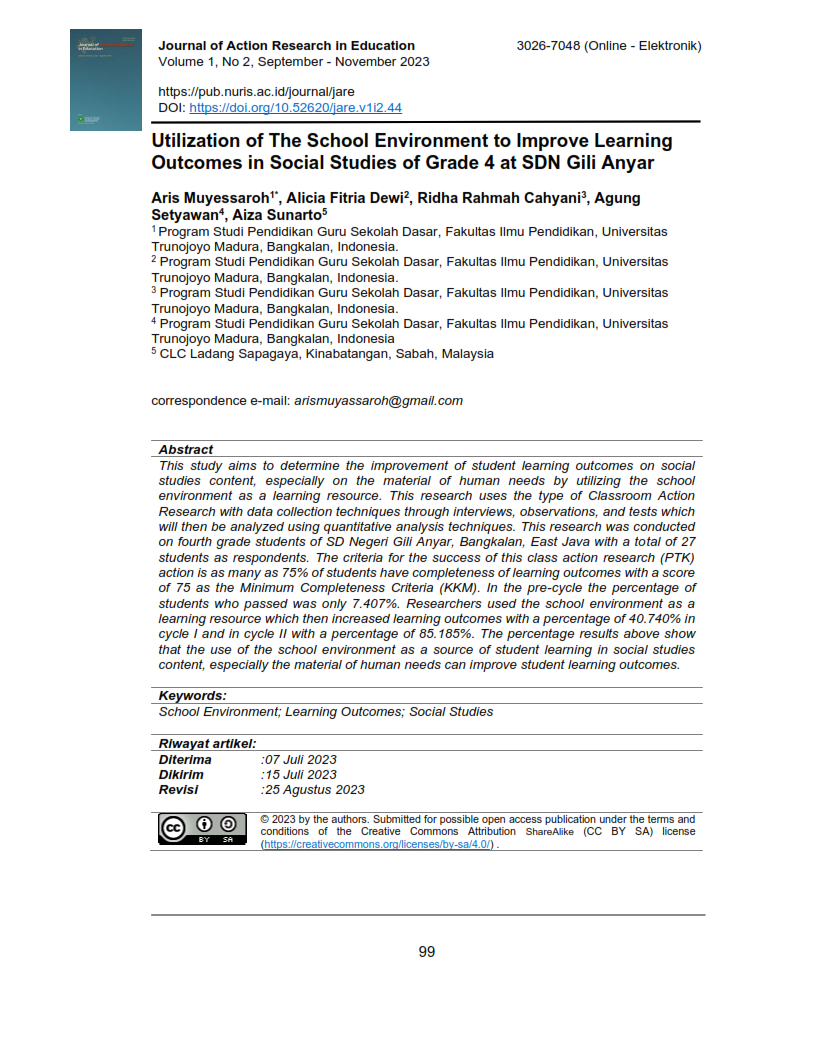Utilization of The School Environment to Improve Learning Outcomes in Social Studies of Grade 4 at SDN Gili Anyar
DOI:
https://doi.org/10.52620/jare.v1i2.44Keywords:
School Environment, Learning Outcomes, Social StudiesAbstract
This study aims to determine the improvement of student learning outcomes on social studies content, especially on the material of human needs by utilizing the school environment as a learning resource. This research uses the type of Classroom Action Research with data collection techniques through interviews, observations, and tests which will then be analyzed using quantitative analysis techniques. This research was conducted on fourth grade students of SD Negeri Gili Anyar, Bangkalan, East Java with a total of 27 students as respondents. The criteria for the success of this class action research (PTK) action is as many as 75% of students have completeness of learning outcomes with a score of 75 as the Minimum Completeness Criteria (KKM). In the pre-cycle the percentage of students who passed was only 7.407%. Researchers used the school environment as a learning resource which then increased learning outcomes with a percentage of 40.740% in cycle I and in cycle II with a percentage of 85.185%. The percentage results above show that the use of the school environment as a source of student learning in social studies content, especially the material of human needs can improve student learning outcomes.




